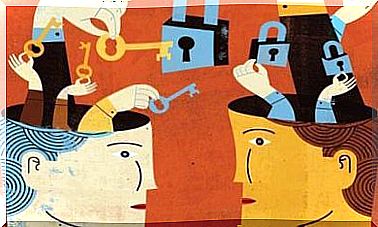Psychologists: People Who Help Translate Thoughts And Emotions

Psychologists take it upon themselves to study people’s behavior. They help translate thoughts and emotions, helping others understand problems. They understand the meaning of what the patient is giving them.
Jacques Lacan, a French psychoanalyst, stated that the unconscious is structured like a language. The unconscious would be that place where a good part of our desires, our fears and emotions are stored. Therefore, according to certain currents, psychologists would be in charge of offering people who require counseling the necessary resources to be able to make these unconscious aspects conscious . We explain what it consists of.
Quality to help translate thoughts and emotions
Psychologists rely on several qualities that allow them to translate their patients’ thoughts and emotions into language that is easy for them to understand. Below we explain some of these faculties:
- Empathy. It is the ability to put ourselves in the other’s shoes. It is easier for psychologists to understand why and how problems affect the patient if they put themselves in his situation.
- Communication. Paul Watzlawick, an Austrian psychologist, said that communication is the basis of the relationship we establish with others. The psychologist, thanks to it, will be able to translate what the patient thinks and feels.
- Knowing how to listen. Psychologists need to be careful what patients say in order not to miss important information.
- Know each other. Separate patient issues from their own to minimize contamination that occurs during communication.

Non-verbal language
Even gestures, expressions, voice and posture give us an account of what happens to us. They can therefore reveal to us very important information of which we are not aware and which, therefore, we do not introduce into our speech.
Thoughts and emotions are subject to the limitations of language. To decipher them, psychologists observe their patients. For example, the expression they take when talking about a problem, the way they sit or any changes in their gaze.
The tone of voice is another telltale factor. For example, does he change the pitch of his voice when he talks about certain topics? Does he take breaks? Remain silent? Does it take your breath away? Increase or decrease the speed at which he speaks? At what volume do you speak? All the aspects that we have mentioned are important, because they help the psychologist to translate the ideas, representations of reality and the feelings of his patients.
What are the techniques most used by psychologists?
Below we present a list of the most frequent techniques used by psychologists during counseling:
- Cognitive techniques. Aaron Beck, a US psychiatrist, said that there is a relationship between a person’s thoughts and feelings, and that these can be reworked. The psychologist identifies them and helps the patient to re-elaborate them, to translate them into a language relevant to him.
- Drawing or painting. They make the unconscious conscious. The psychotherapist, therefore, helps to shape the patient’s ideas and emotions when they are difficult to express in words and then interprets them.
- The word. The therapist recognizes the patient’s thoughts and emotions as he talks to him.

- Behavior. The therapist takes into account the patient’s behavior during therapy and how he describes his behavior outside of therapy. For example, are you aggressive, disinterested, joyful, very excited?
- Non-verbal language. Psychologists in many cases help translate thoughts and emotions because they pay close attention to how we express ourselves from a non-verbal point of view. They look at the content, but do not get distracted from the background, from the structure. In other words, they take into account gestures, facial expression and body posture.
- By bringing to light what is unconscious. Most of the psychologists who defend its existence think that the unconscious manifests itself in different ways, in the form of dreams, art, mistakes when talking and forgetfulness. The psychologist pays attention to these elements and signals them to the patient / client. It is he who ultimately gives them meaning, if they have it.
- Psychodrama. It is a technique created by Jacob Levy Moreno in which patients represent / rework what happens to them. The psychologist later helps the patient to interpret the representations, understanding that some content of his unconscious could be manifested in them.
Psychologists in many cases act as a kind of mirror, pointing out the expressions they have caught in the patient / client so that he can interpret them. On the other hand, they can help him organize the speech, letting him take the initiative at any time and acting as a kind of stick or support, so that the process does not lose continuity. This is how psychologists help translate our thoughts and emotions, so that we can consciously intervene on them.









